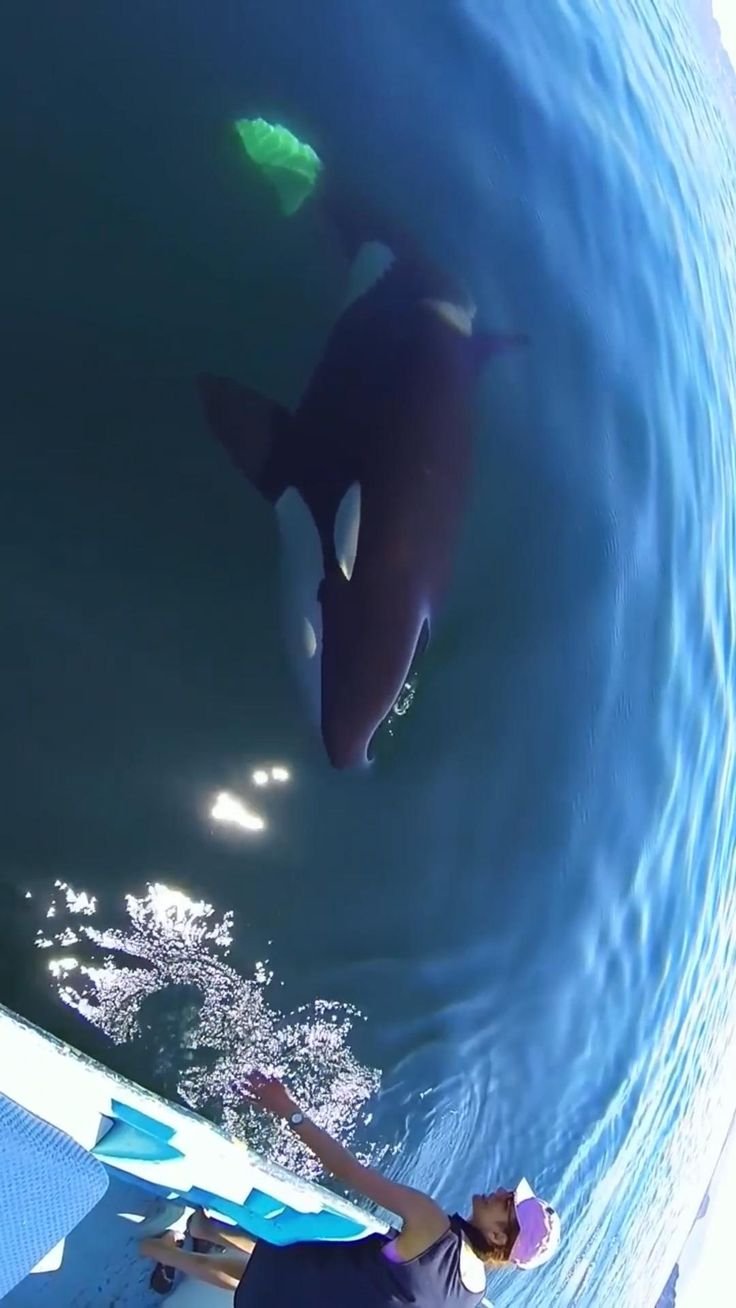
Let’s dive deeper into the world of orcas and explore how humans can interact with them in a safe and respectful way. We’ll look at their behavior, the environments they thrive in, and the best practices for sharing space with them. So, grab your coffee, and let’s chat about the long, fascinating journey of understanding these incredible marine mammals.
Understanding Orcas: The Ocean’s Apex Predators
Orcas are often called “killer whales,” but don’t let that name fool you. They are actually the largest members of the dolphin family. These highly social creatures live in pods, which are family groups that can consist of up to 40 individuals. Each pod has its own unique culture and hunting techniques, making them fascinating animals to study.
Orcas are known for their intelligence. They can communicate using a wide range of vocalizations, and their social structures are complex. You might be wondering, what does this mean for human interaction? Well, understanding orca behavior is crucial. Respecting their social dynamics and natural habitat is key to ensuring safe and meaningful interactions for both humans and orcas.
The Importance of Respect in Interactions
When it comes to interacting with orcas, respect is paramount. These majestic creatures deserve their space. Approaching them too closely can stress them out and disrupt their natural behaviors. Just like us, orcas have moods and personalities, and they don’t always want company.
Here’s the thing: Many people want to swim with orcas or see them up close, which can sometimes lead to unsafe situations. Responsible interactions mean observing orcas from a distance, ensuring the animals feel comfortable in their environment. So, if you spot an orca while boating or snorkeling, make sure to keep your distance. It’s not just about safety; it’s also about allowing them to be themselves.
Can Humans Safely Swim With Orcas?
The idea of swimming with orcas is thrilling. However, it’s important to remember that while they can be friendly and curious, they are still wild animals. Generally, swimming with them in the wild isn’t recommended. You might find tours that promise such experiences, but they often disregard the well-being of the orcas.
For safety’s sake, it’s best to look for regulated tours that focus on eco-friendly practices. These types of tours prioritize the orcas’ health and safety, giving you the chance to admire them from a distance. If you’re ever tempted to get in the water, always remember that respecting their space is crucial.
Orcas in Captivity: A Controversial Topic
Interactions with orcas in captivity—like in marine parks—raise significant ethical questions. Captive orcas often face challenges that their wild counterparts don’t, including limited space and unnatural living conditions. While some argue that marine parks contribute to conservation and education, others point out the stress and suffering these animals experience.
If you’re thinking about visiting a marine park, it’s essential to educate yourself about the practices there. Prioritize places that focus on rescue and rehabilitation rather than entertainment. Understanding the impact of captivity on orcas helps ensure you’re supporting more ethical practices.
Protecting Orcas and Their Habitat
Beyond direct interactions, protecting the habitats of orcas is vital. Pollution, overfishing, and climate change threaten these magnificent creatures. By supporting conservation efforts, you can help ensure future generations will also get the chance to admire orcas in the wild.
Get involved! You can participate in local clean-up efforts, spread awareness about ocean conservation, or support organizations dedicated to protecting marine life. Remember, every small effort counts.
Guidelines for Safe Interaction
If you ever find yourself lucky enough to encounter orcas, follow these guidelines to ensure a safe interaction:
- Observe from a distance: Stay at least 200 yards away.
- Don’t approach: Let orcas come to you if they’re curious.
- Limit noise: Keep the volume down to avoid startling them.
- Respect their pods: If they’re socializing or hunting, don’t intrude.
- Educate yourself: Learn about orca behavior before your encounter.
By following these simple steps, you can enjoy an encounter with orcas while ensuring their safety and well-being.
Learn from Others: Stories of Safe Interactions
There are countless inspiring stories from people who have respectfully interacted with orcas. One notable example is researchers who study orca pods from a respectful distance. They’ve documented unique behaviors, migratory patterns, and social interactions. Their work deepens our understanding of these animals without disrupting their lives.
Another example involves eco-tour operators who create unique opportunities to observe orcas while adhering to ethical guidelines. These tours often promote conservation and education, teaching participants about the importance of protecting these magnificent animals.
Interacting with orcas can be a thrilling experience, but it comes with responsibility. The key is to approach any interaction with care and respect. Whether you see orcas from a boat or study them from a distance, remember that these magnificent creatures deserve our utmost respect. By prioritizing their safety and supporting conservation efforts, we can ensure that future generations will also have the opportunity to appreciate the beauty of orcas in the wild.
So, the next time you think about orcas, remember: it’s not just about the thrill of being near them; it’s about fostering a safe, respectful relationship with these remarkable animals. The ocean is their home, and when we respect that, we all win.

